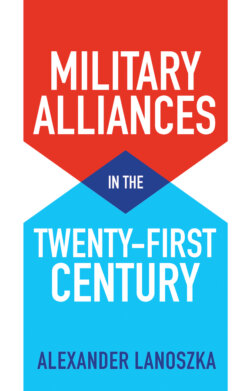Читать книгу Military Alliances in the Twenty-First Century - Alexander Lanoszka - Страница 11
Conventional wisdom #2: The alliance dilemma is a fundamental problem shared by all military alliances
ОглавлениеScholars and observers frequently allude to something called the alliance dilemma to highlight the steep trade-offs that come with commitment-making in the face of possible war. When providing an ally with a broad military commitment, a state may worry that the benefiting ally would be emboldened to have a more aggressive foreign policy than it would otherwise have, thereby upping the risk of some undesirable war. However, weakening a military commitment to offset those so-called entrapment risks could leave the receiving state fearful that its allies will abandon it to the depredations of an adversary. Entrapment and abandonment are thus two sides of the same coin, with severe trade-offs confronting decision-makers when they are designing and managing alliances.
How severe is the alliance dilemma? Chapters 2 and 3 explore the issues of entrapment and abandonment, respectively, to build up an argument that this dilemma is not really a dilemma. The problems highlighted here are instead tractable; certainly, they are not endemic to all alliances. Chapter 2 notes the different sources of entrapment risks that exist and what strategies allies can adopt to mitigate them. These sources can be the alliance treaty itself, systemic factors like polarity and the offense–defense balance, obsession with reputation, and transnational ideological networks. Sometimes these risk factors can be mutually reinforcing; sometimes they can cancel each other out. Nevertheless, although entrapment is empirically rare, the historical record reveals that decision-makers do genuinely worry about it. But precisely because they take it seriously, entrapment becomes a self-denying prophecy. As for abandonment fears, no state should ever be rationally confident that it would receive support from a defender against a militarily capable adversary. Chapter 3 explains that, although abandonment fears are normal in the face of an external threat, such fears seldom reach a level of intensity that leads states to consider neutralism or nuclear proliferation. This chapter probes the factors that can affect the intensity of abandonment concerns and discusses how states practice reassurance to convince allies that their security concerns are being addressed.
Taken together, the punchline of Chapters 2 and 3 is that the alliance dilemma is not as pronounced as often asserted because tools are available for addressing it. The trade-offs implied by the dilemma do not always exist. Sometimes states are so aligned in their political interests with one another vis-à-vis their adversaries that they simply do not face such conundrums in their alliance decision-making. Still, certain measures that some observers advocate for addressing contemporary forms of subversion may not be necessary and may even be counterproductive with respect to reassuring worried allies.
